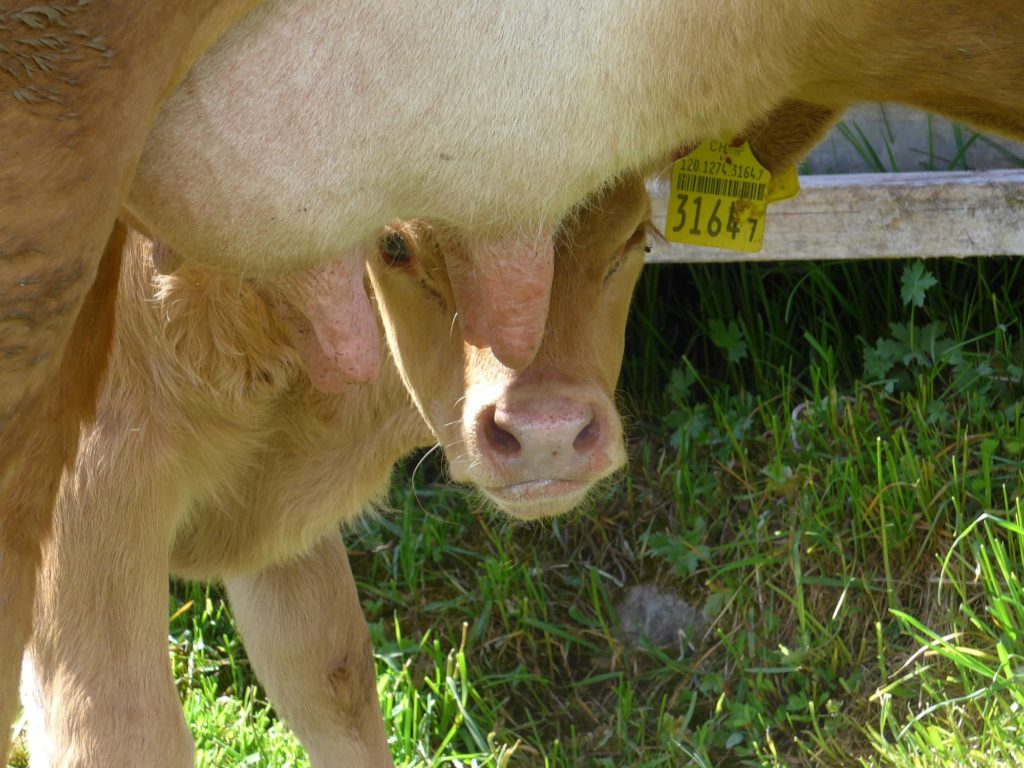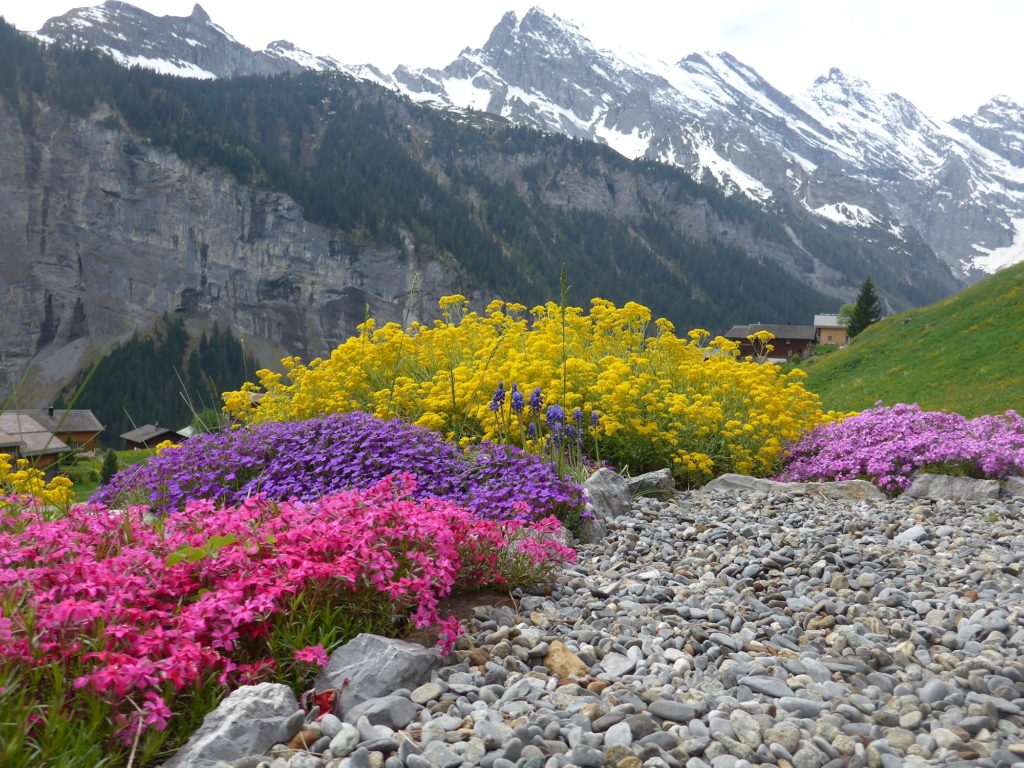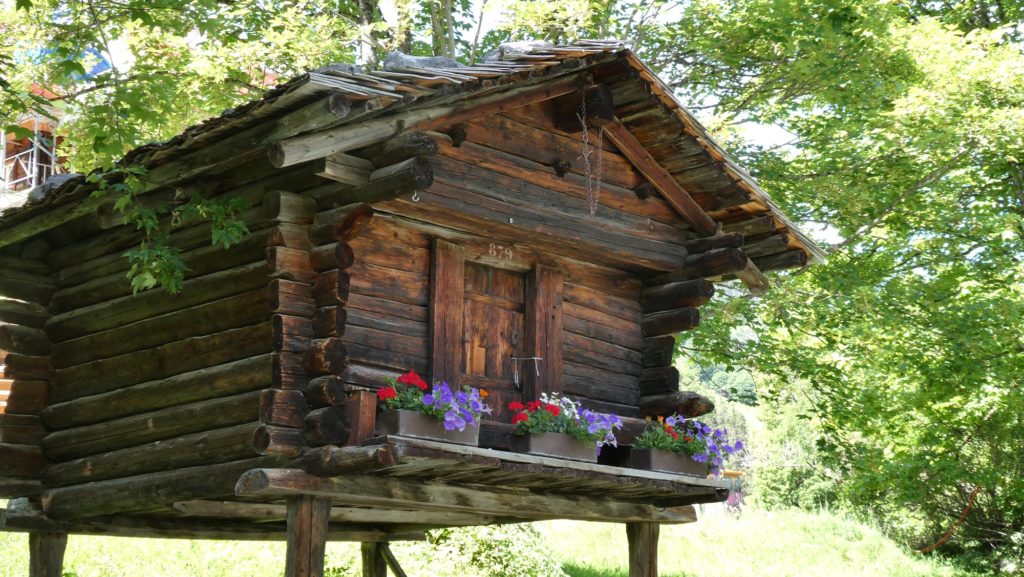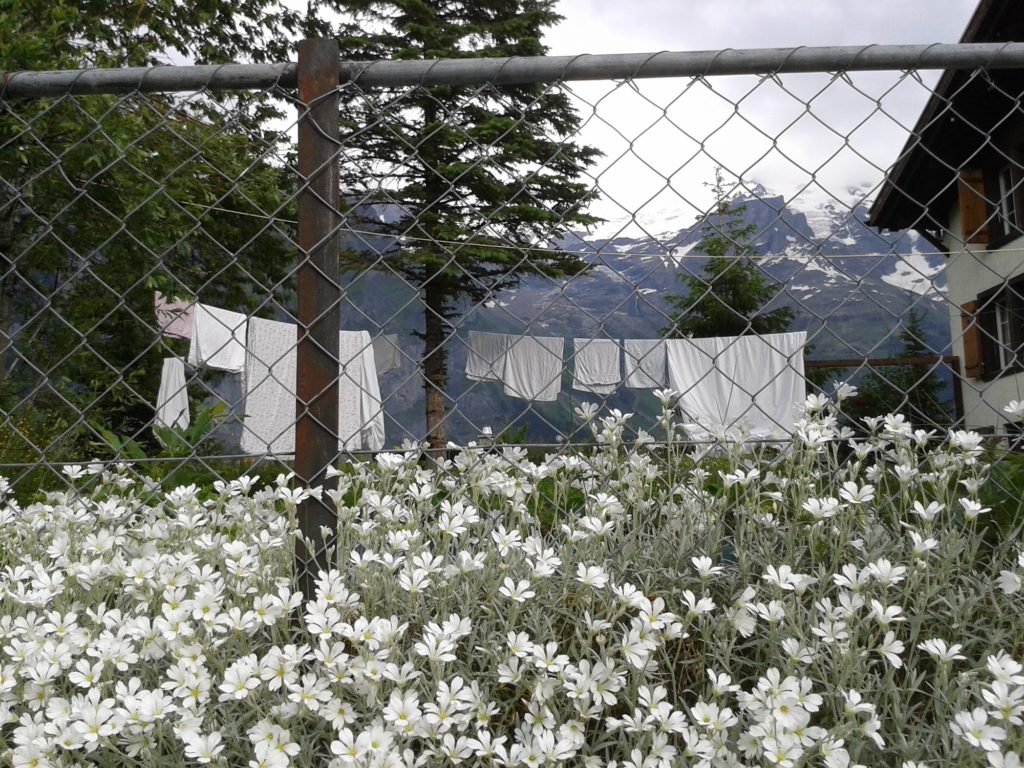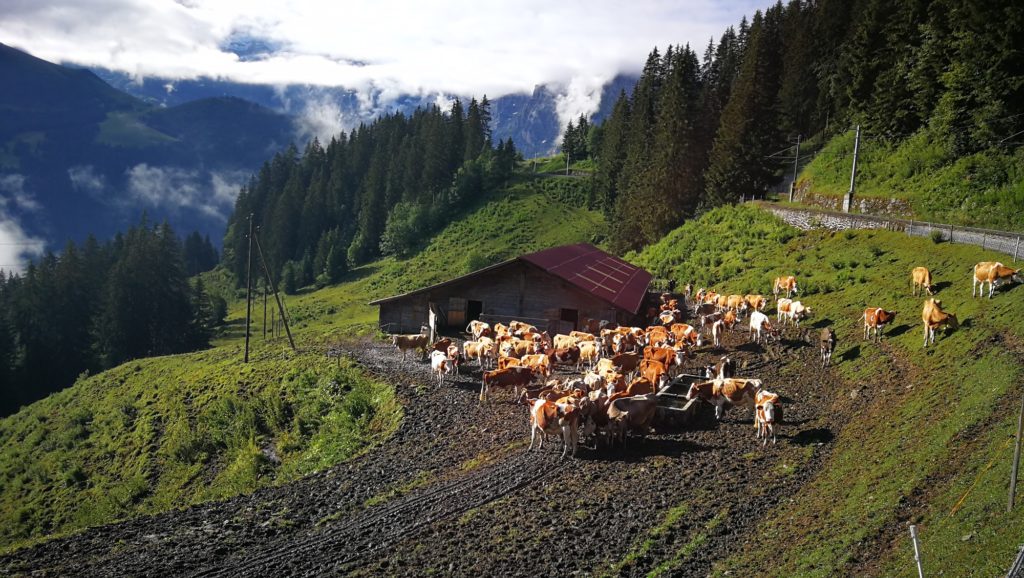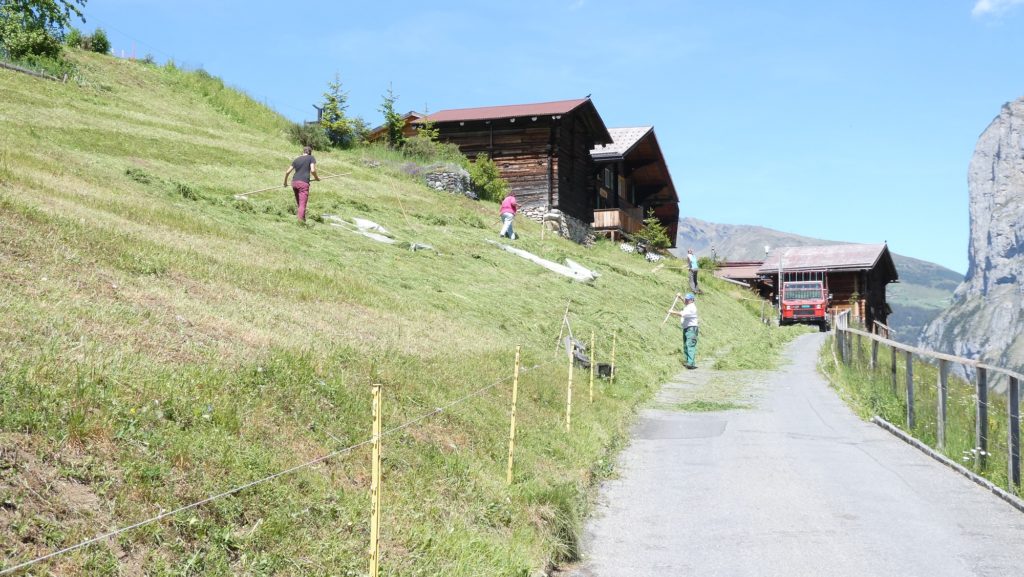At last spring has arrived in all its splendour. The meadows have been transformed into carpets of flowers. The beauty of the daisies, forget-me-nots, red campion (Silene dioica), harebells and greater yellow rattle (Rhinanthus alectorolophus) is breath taking. Not only the cuckoo has returned. On the Sefinen the grey wagtails are breeding and flocks of citril finches (Serinus citrinella), linnets, goldfinches and whinchats can be seen flying around. Then the day arrives when all the farm vehicles suddenly set off for Mürren. At the flower market every family clan stocks up with geraniums and petunias. No expense is spared. Flower boxes appear in front of every window. The geraniums which have been overwintered look rather sorry for themselves for a few days but they soon perk up and start flowering a few weeks later. While the hay is being cut in the lowlands, the farmers here can begin with making silage. Silage means that the fresh grass is filled into a silo and undergoes a fermentation process before being fed the next winter. In the mountain climate, where there is often a thunderstorm in the evening, this form of preservation is becoming more and more popular.
The 'Pfander', who is responsible for all decisions made about the alp, or the President of the alp cooperation sets the date on which the cows will go up to the alp. When deciding this date practical considerations and tradition have to be taken into account. Monday, Wednesday, Friday and Sunday were found by our ancestors to be extremely unfavourable, so, if there is no compelling reason not to, the cattle will be brought up to the alpine pastures on a Tuesday, Thursday or Saturday. June 22nd is a special day which must also be taken into consideration. On this day one really should not take the cattle to the alp. As long as there are people in Gimmelwald with a sense of responsibility then no cow will have to make its way up to the alp on June 22nd.1 Should this be ignored then every possible misfortune would be pre-ordained - they would be struck by lightning, an alpine hut would burn down or something equally terrible would happen. But that's common knowledge!
Every family takes its own cows up to the alp. How early or late they leave depends on the family. There is nothing more majestic than a herd of cows bidding the village farewell for the summer with their bells. The bells are an important part of tradition. They are really only for decoration and cost the farmer a fortune. On average, the animals spend about 100 days on the alp. There are several alps around Gimmelwald. The dairy cows spend the summer on the Sefinenalp and on the Schilt. Some farmers also bring a few of their cows to alp Winteregg. The younger cows (which are not milked yet) as well as the suckler cows with their calves are on the Busenalp. There are also goat alps, such as the Breitlauenen alp in the rear Lauterbrunnen valley.
1 Ten thousand martyrs may refer to the ten thousand martyred Fathers of the deserts and caves of Scete by Theophilus of Alexandria or to the ten thousand martyrs of Mount Ararat who were, according to a medieval legend, Roman soldiers who, led by Saint Acacius, converted to Christianity and were crucified on Mount Ararat in Armenia by order of the Roman emperor. The story is attributed to the ninth century scholar Anastasius Bibliothecarius.
source


